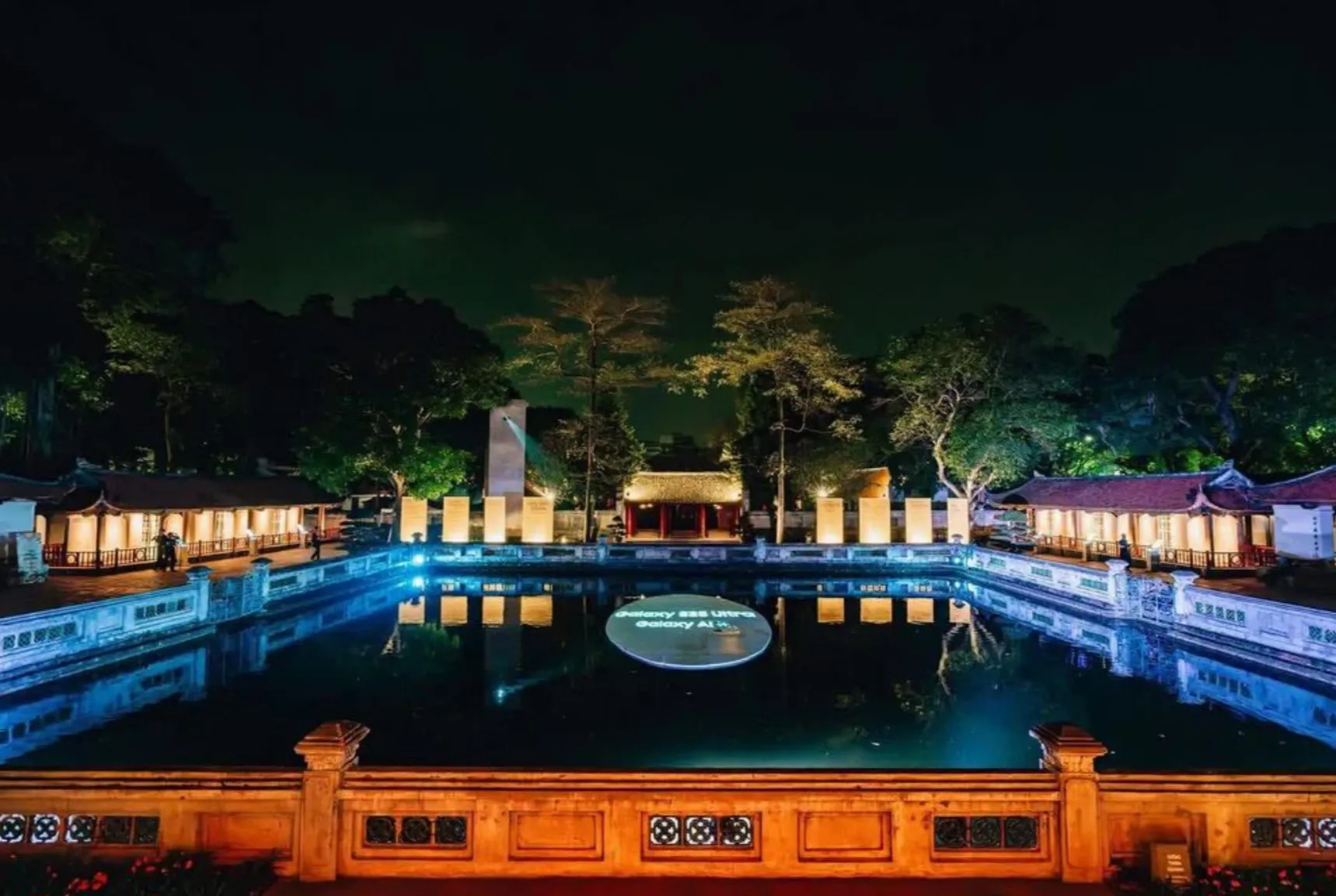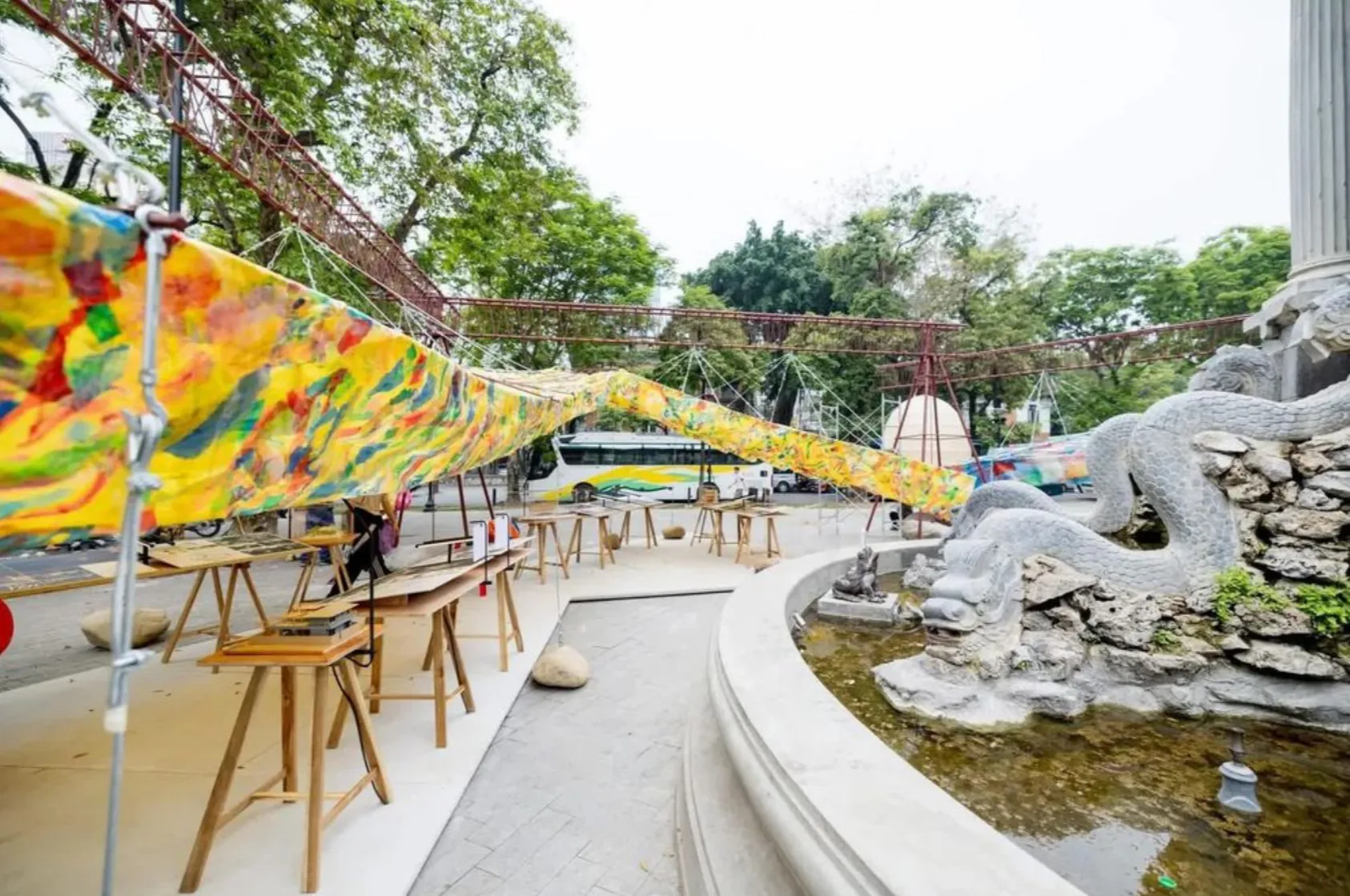Hanoi leads Southeast Asia creative economies
Hanoi is ramping up plans to position itself as a major creative hub in Southeast Asia.
THE HANOI TIMES — Since joining the UNESCO Creative Cities Network in 2019, Hanoi has steadily transformed global recognition into local action.
The city is no longer merely a repository of historical heritage, it has become an incubator for design thinking, artistic innovation, and culture-led development.

Van Mieu – Quoc Tu Giam uses digital tools to bring its heritage to life. Photos: Kinh te & Do thi Newspaper
Hanoi is home to the highest number of creative hubs in Vietnam, and its ecosystem has grown across districts and disciplines. Spanning from visual arts and architecture to crafts and contemporary music, the capital is laying the groundwork for a knowledge-based economy rooted in culture. According to the Vietnam Creative Hubs Initiative, Hanoi had around 80 creative spaces by 2020, accounting for nearly half of the national total.
These hubs are more than just venues for exhibitions and performances. They are platforms where artists, entrepreneurs, and communities converge. They generate jobs, boost tourism, and open markets for cultural goods and services. Most importantly, they provide a shared space for dialogue, inclusion, and identity building in a rapidly changing city.
Bach Lien Huong, Director of Hanoi's Department of Culture and Sports, said that creative hubs are essential to shaping the city's identity. She described them as engines of change that connect tradition with technology, demonstrating how culture can fuel sustainable growth.
This is evident in Hanoi's reinvention of its heritage spaces. Van Mieu Quoc Tu Giam now hosts a heritage education zone with interactive storytelling. The Thang Long Water Puppet Theatre explores new visual formats while the Hoa Lo Prison Relic delivers immersive visitor experiences. These sites are no longer static. They evolve with each creative intervention.
Creative energy is also transforming public spaces. The Hoan Kiem pedestrian street, the Trinh Cong Son pedestrian zone, and the Dien Hong Flower Garden are becoming vibrant stages for art and performances. Installations made from recycled materials and traditional do paper now bring once-ordinary spaces to life. In partnership with the private sector, urban developments such as Bac An Khanh and the southern Ring Road 3 corridor are being explored as future creative districts.

A unique public art space made of recycled materials, handmade do paper, and steel structures at Dien Hong Flower Garden in Hoan Kiem District.
Regarding policies, Hanoi has released several strategic documents aimed at advancing its creative industries. Resolution 09 and Plan 97 detail the steps necessary to establish culture as a primary economic pillar by 2030. The 2024 revision of the Capital Law provides creative startups, cultural industry zones, and innovation with new legal tools and funding mechanisms. The establishment of the Hanoi Creative Coordination Center at the Hanoi Museum is a milestone.
Nguyen Thi Ngoc Hoa, the center's director, said it aims to build a functioning ecosystem, not just a network. She emphasized the importance of helping small creative spaces grow, reach wider audiences, and integrate into global value chains. Hanoi’s connection to UNESCO’s global network provides visibility and accountability.
In support of this ambition, the Department of Culture and Sports invites creative groups and individuals to join the city’s Creative Hubs Network. Members will have access to promotional channels, licensing assistance, and potential co-funding for exceptional projects. They will also have the opportunity to network with other cities in the UNESCO Creative Cities Network and take part in policy consultations and cultural showcases.
Jonathan Baker, UNESCO Vietnam’s Chief Representative, called the effort a critical step in empowering the city’s creative community. He stressed that Hanoi’s approach extends beyond infrastructure. It focuses on the people who drive innovation and shape the city’s cultural future.
Technology will be essential in the next phase. The city is encouraging digital exhibitions, storytelling platforms, and virtual archives to reach a wider audience, particularly younger generations. Policymakers are considering how to synchronize the creative strategy with regional trends in sustainability, green design, and cultural entrepreneurship.
Hanoi’s creative strength lies in its ability to balance tradition and innovation. As more creators find support and audiences in the capital, a new narrative is emerging. One that honors the past while embracing the future. Hanoi is not waiting for recognition. It is creating its own, one idea at a time.











